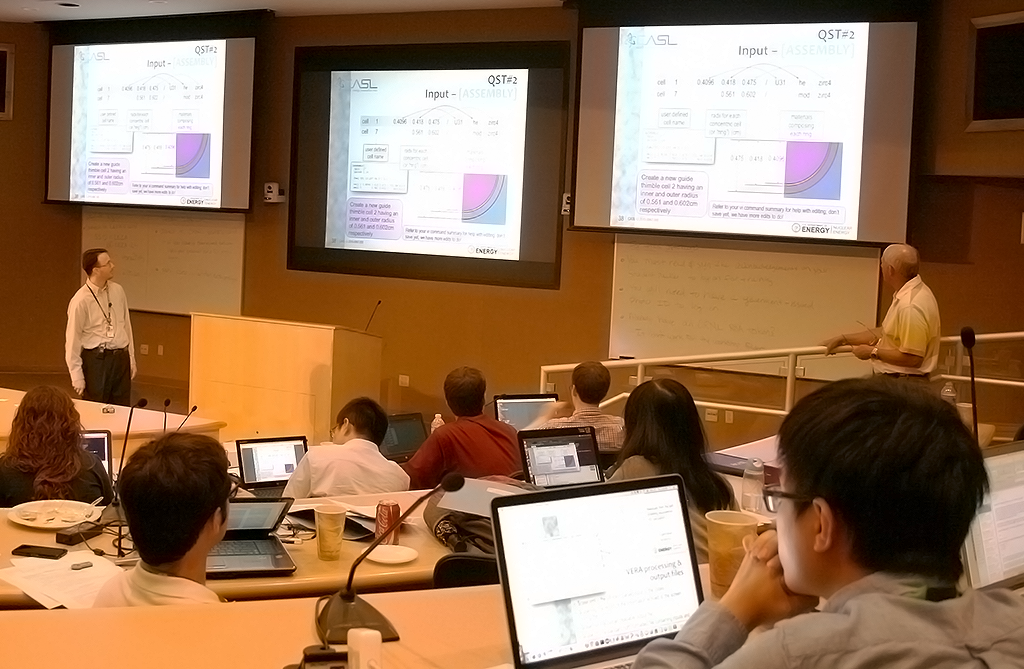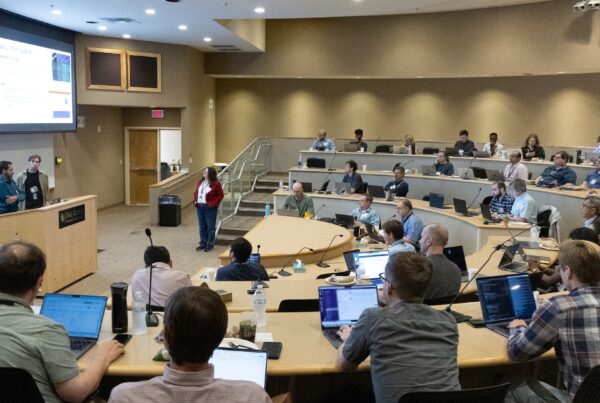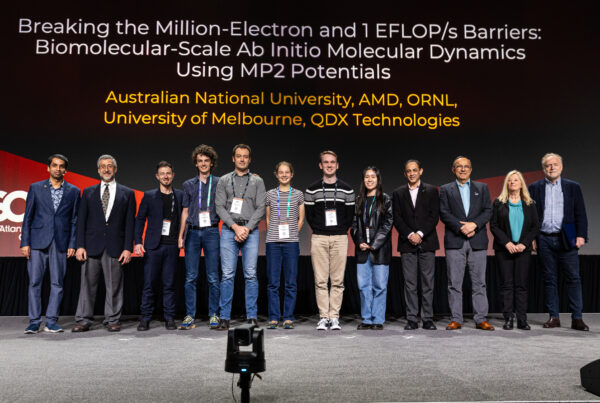
ORNL staff member Andrew Godfrey provided instruction during the hands-on portion of the CASL Education Council Summer Student Workshop, which took place at ORNL June 17–19. Image credit: Eric Gedenk, OLCF
Three-day conference helps graduate students hone their craft by using leadership computing resources
The Consortium for Advanced Simulation of Light Water Reactors (CASL), located at the US Department of Energy’s (DOE’s) Oak Ridge National Laboratory (ORNL), has made student education and training a priority since its beginning in 2010.
As the first DOE Innovation Hub, CASL was tasked not only with modeling commercial nuclear reactors for the sake of safety and efficiency improvements but also with training next-generation researchers to continue improving the US nuclear power infrastructure.
Through this effort, CASL staff created the annual Education Council Summer Student Workshop, which took place at ORNL June 17–19. The workshop has evolved over 5 years, and the 2015 meeting was the most hands-on experience yet.
“These students have the opportunity to submit a big scientific problem on a world-class machine, allowing them to do problems they would never be able to do elsewhere,” said Mike Doster, organizer of the event and a nuclear engineering professor at North Carolina State University, a CASL founding partner organization.
The world-class machine Doster referenced is the Oak Ridge Leadership Computing Facility’s (OLCF’s) Cray XK7 Titan supercomputer, capable of 27 petaflops, or 27 quadrillion calculations per second. The OLCF, a DOE Office of Science User Facility located at ORNL, gave the students access to Titan and CASL’s LEZA cluster as part of this year’s workshop. Students worked with ORNL’s Andrew Godfrey and Robert Salko to run simulations on Titan.
By having access to supercomputers, students were able to use the Virtual Environment for Reactor Applications (VERA) to simulate nuclear reactors. In addition to running simulations on supercomputers, students also toured ORNL facilities and heard various speakers.
Rose Montgomery, senior project manager for modeling and simulation at the Tennessee Valley Authority (TVA), another CASL founding partner organization, developed the student training modules. Montgomery said the opportunity to use leadership-class computing resources is valuable for those who will work in industry.
“Today’s high-performance computer is tomorrow’s industrial cluster,” she said. “Tools like CASL VERA that leverage parallel processing are essential in generating the higher fidelity simulations needed to make good engineering and business decisions. Getting engineering students comfortable with using parallel computing tools is essential to their success in the future workforce.”
Montgomery added that the modules, which were based on data from the TVA Watts Bar Unit 1 reactor, sequentially increased in complexity—students began by simulating a two-dimensional fuel rod and ended with a fully detailed three-dimensional reactor core. “The progression allows students to quickly understand the basic layout of the VERA input and provides some additional opportunities for discussion of typical commercial reactor operation,” she said.
The CASL project’s founding member institutions include ORNL, Idaho National Laboratory, Los Alamos National Laboratory, the Massachusetts Institute of Technology, North Carolina State University, TVA, the University of Michigan, Sandia National Laboratories, the Electric Power Research Institute, and the Westinghouse Electric Company. Other companies and universities also take part in CASL research. For a full list of CASL partner institutions, click here.
Oak Ridge National Laboratory is supported by the US Department of Energy’s Office of Science. The single largest supporter of basic research in the physical sciences in the United States, the Office of Science is working to address some of the most pressing challenges of our time. For more information, please visit science.energy.gov.





